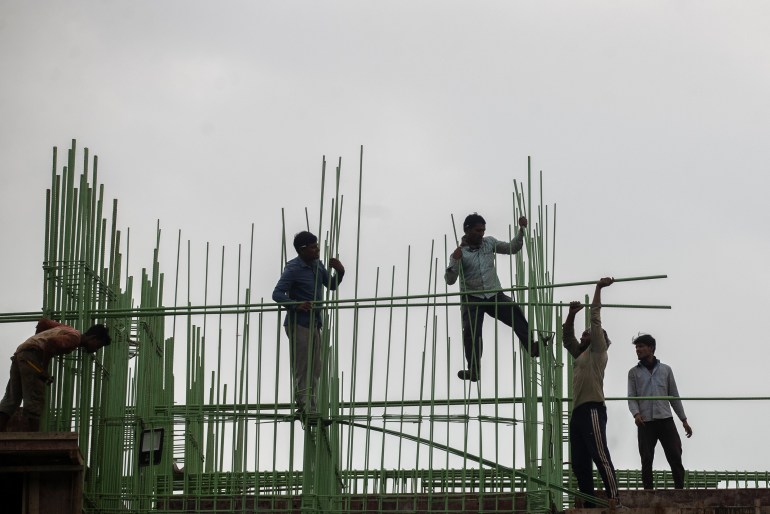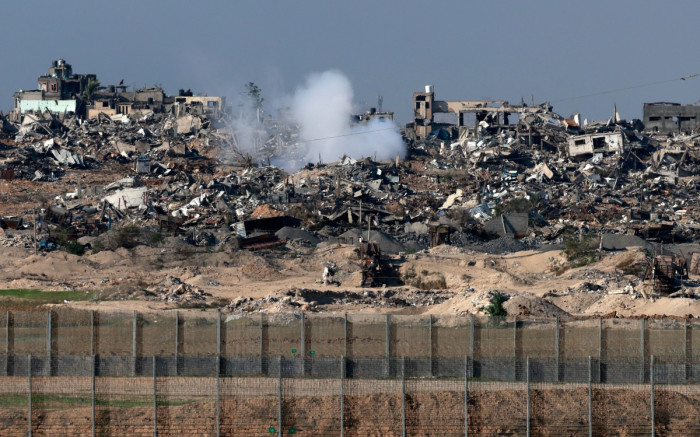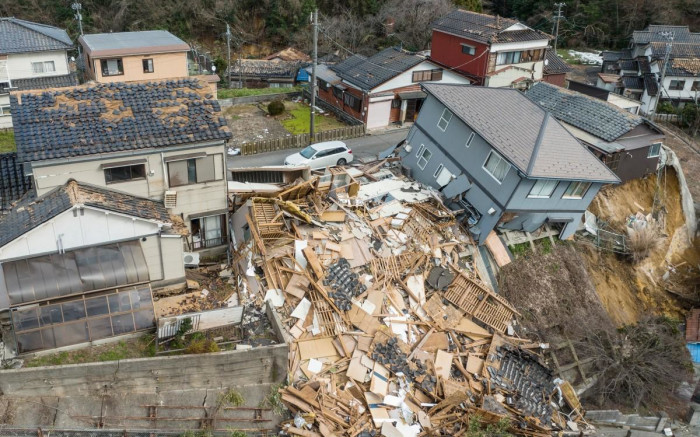Interim meeting of India’s Finance Minister Nirmala Sitharaman Budget last week marked almost ten years of Prime Minister Narendra Modi’s government. Ahead of national elections in a few months, Sitharaman showcased the government’s achievements in the last decade instead of showering freebies. A careful analysis reveals the changing patterns in the Indian economy.
Sitharaman reduced food subsidy by 3.3 percent to 2.12 trillion rupees ($25.5 billion) in 2025, from 2.05 trillion rupees ($24.6 billion) in the current fiscal year. Fertilizer subsidy was also cut while capital expenditure remained at 1.3 trillion rupees ($15.6 billion).
By keeping that spending under control, it was able to announce that the budget deficit for the year ending March 2025 would be 5.1 percent, below market expectations of around 5.3 to 5.4 percent.
“The fiscal deficit was one of the most surprising things in the budget,” said Suman Bannerjee, chief investment officer at Hedonova, a global hedge fund. “That was lower than we expected.”
The cut subsidies also indicate India’s “move away from agriculture toward manufacturing,” Bannerjee said.
The government had previously announced free food deliveries to India’s poorest to protect them from possible food price hikes.
In her speech, Sitharaman said average real income has increased by 50 percent, more than 250 million people have been lifted out of poverty and the economy has catapulted from 10th to fifth largest in the world in the last decade.
These figures were disputed by the opposition Congress party.
“COVID and this government’s GST [goods and services tax] They have dealt a double blow to the country’s poor and small businesses that this government has failed to address,” said Manickam Tagore, Congress MP and party leader.
Demand for the country’s Food for Work program has only increased in the last year, reflecting the plight of the country’s poorest, he said.
In her speech, Sitharaman said that the lower fiscal deficit was also made possible by growing private investments.
“We examined whether private sector capital spending is recovering and whether there are early signs of a recovery,” said Sunil Sinha, chief economist at Fitch Ratings. “There is no broad-based revival in business investment yet, but investment in steel, cement, renewable energy and other sectors is increasing due to increased government investment in infrastructure.”
The government’s improved tax collection may also have helped reduce the fiscal deficit, Bannerjee said. Higher tax revenue was achieved by expanding the scope of the luxury tax, for example by including restaurant expenses.

All this allowed the Finance Minister to maintain her investment allocations while keeping the budget deficit under control. India is expanding public infrastructure such as roads, subways and ports at a record pace, thereby driving economic growth. “It has not diluted its investment focus,” said Sinha of Fitch Ratings.
Rural India
The finance minister also announced several programs to strengthen the rural economy, such as building rural housing, free food for the poor and promoting aquaculture.
While India’s economy is expected to grow a solid 7.3 percent in the year to March 2024, there are concerns that it is urban-centric.
“She lives in an ivory tower. She does not know the pain of the people,” said Tagore of the Congress party. “In small towns, I see that medium and small businesses have closed due to the implementation of GST.”
Thursday’s budget measures could help harness the benefits of urban growth to boost the rural economy. “Some of these are similar to an indirect income transfer,” Fitch’s Sinha said. “So far, the benefits of growth have accrued to the top 50 percent in urban India. Some investment needed to be made for the benefits to reach rural areas.”
Gender focus
The finance minister also announced several initiatives to promote women’s skills development and entrepreneurship, including expanding a program to train rural women in skills such as bulb making and plumbing.
The proportion of women in the rural workforce has increased, but primarily in agriculture. This is often characterized by low wages and seasonal work. Acquiring such skills could ease women’s transition into manufacturing jobs.
“The data shows that [the] “Unemployment benefits have gone down, women’s unemployment has gone down and men’s unemployment has gone up,” Hedonova’s Bannerjee said.
In India, women’s labor force participation is low: in 2023, only 37 percent of women were in formal employment [science, technology, engineering and maths] Prices had risen sharply in the last decade.

However, Raghuram Rajan, India’s former central bank governor, recently told the BBC that not enough attention had been paid to the creation of “human capital” in India.
Sinha and Bannerjee stressed that detailed employment data has not been collected in the last decade. “Without credible data on jobs, we are flying blind,” Rajan had told the BBC.
Renewable energy
The Finance Minister announced a rooftop solar energy program that will enable 10 million households to receive 300 units of free electricity per month. These households could also sell back the excess energy they generate. She also announced an expansion of charging infrastructure for electric vehicles and funding gaps for wind power projects.
India has announced a goal of reaching net zero by 2070 and these plans lay out a roadmap to achieve this.
“The southern states are largely self-sufficient; This will help northern states where there is a deficit. It will also contribute to the development of wind energy, which lags behind other renewable energies,” said Hedonova’s Bannerjee.
Sitharaman also kicked off the election season by announcing a white paper to be tabled in Parliament. It examines where the country was until 2014, during the previous government, and where it is now, to draw lessons from the “mismanagement of those years”.
The careful spending policy in the run-up to the elections could be a sign of the government’s confidence. Just a few weeks ago, the country won elections in three major states and Prime Minister Modi also inaugurated the Ram temple in Ayodhya on January 22 to nationwide fanfare.
Modi said the Budget had hit a “sweet spot” that led to capital spending while maintaining fiscal discipline.






Recent Comments